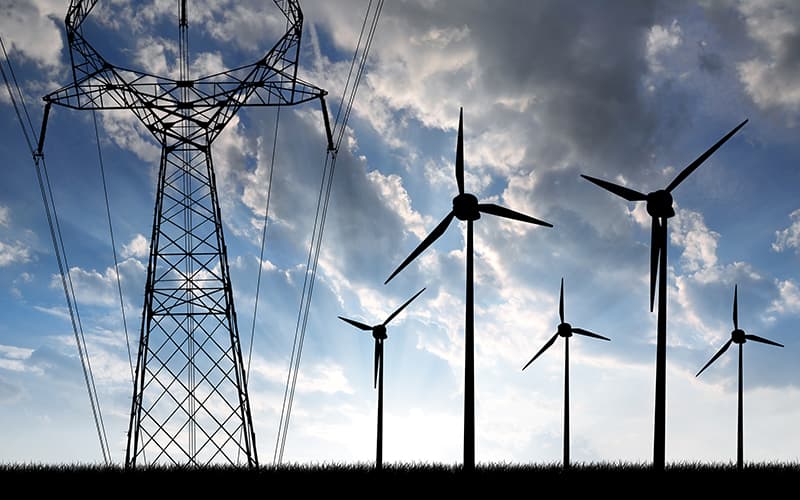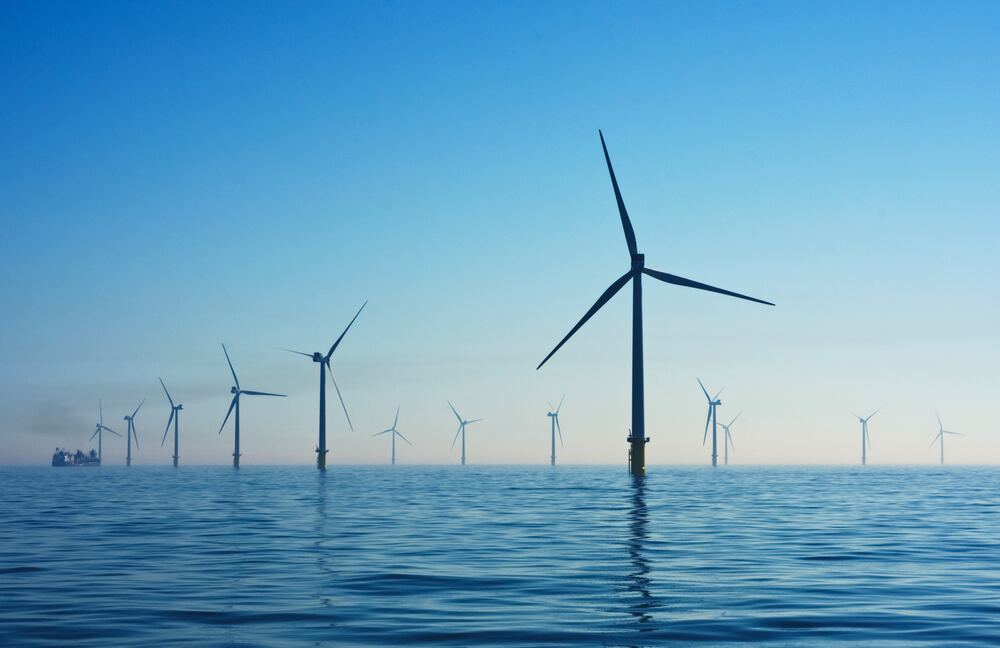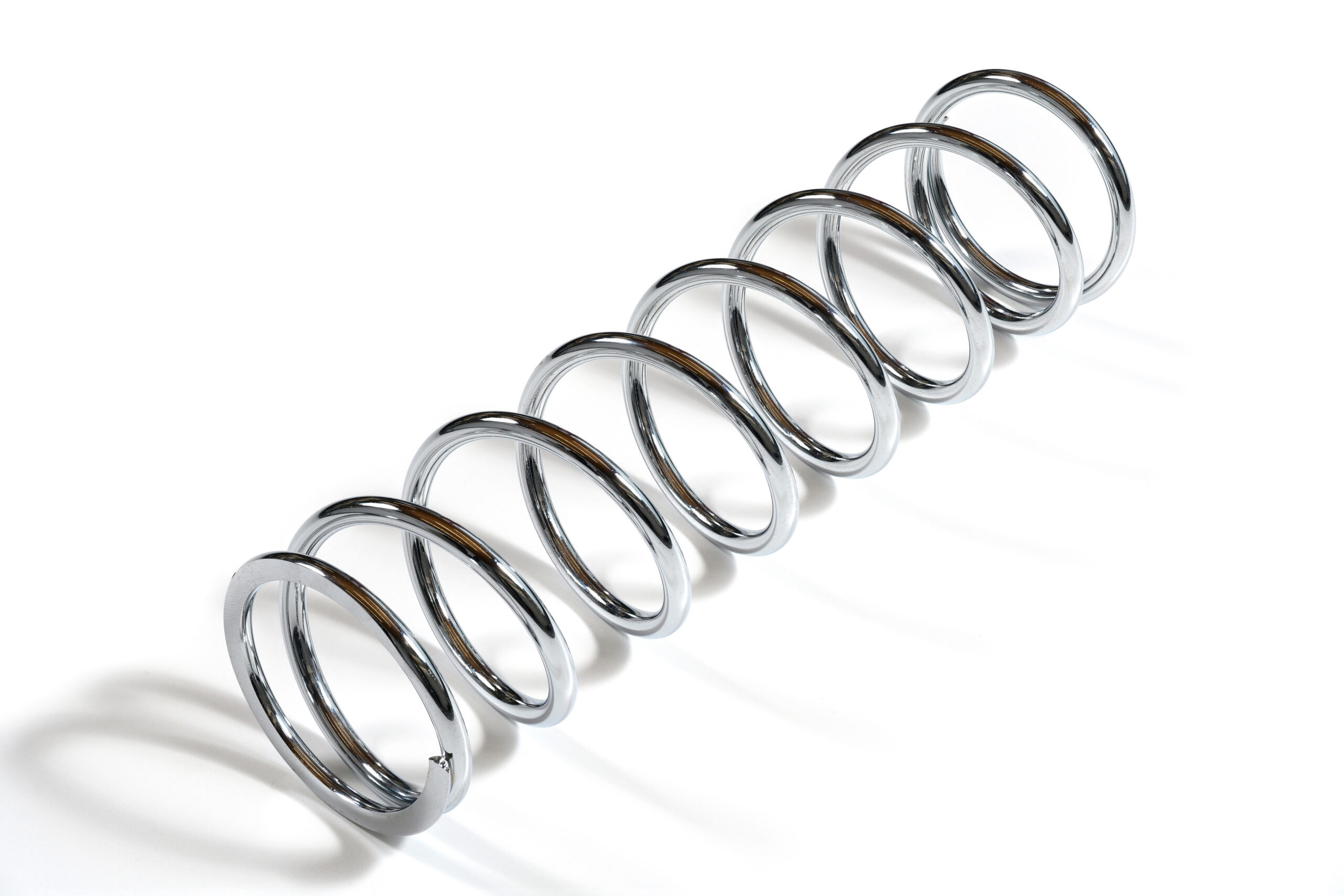Please complete the form below, and one of our experts will be in touch.
If you would like to send a technical drawing with your enquiry, please email heavysprings@lesjoforsab.com

There’s no doubt that we find ourselves amid a climate crisis. In an attempt to curb global warming, we’re reducing our reliance on fossil fuels and focussing on obtaining energy from renewable sources such as wind. In the UK alone, there are now almost 12,000 wind turbines and the landscape is peppered with clusters of three-blade turbines, turning the power of nature into a more sustainable form of energy.
Each wind turbine component has an important function, from the wind-capturing blades to the speed-enhancing gearbox. Even smaller parts such as heavy-duty springs contribute to the performance, efficiency and safety of these massive structures. At Lesjöfors, we’ve been manufacturing precision-engineered, specialist springs for the renewable energy sector for decades. In this post, we delve into the components of wind turbines, how they work, and the role heavy-duty springs play in optimising their performance.
First, let’s look at how wind turbines are constructed and what some of the components are.
As with any large structure, a wind turbine has a heavy and strong concrete base to support its weight and anchor it firmly to the ground, maintaining its stability against high winds and vibrations. On onshore wind turbines, the foundation is located under the ground, while on offshore turbines, it’s below the water's surface. An offshore wind turbine’s foundation can take various forms depending on the depth of the water, and sometimes it can even be floating.
A wind turbine tower typically ranges in height from 80 to 120 metres, depending on the rotation circle of the blades. It elevates the turbine blades to higher altitudes to capture wind energy more effectively. The tower is generally constructed of steel to give it strength and stability against high winds and other environmental forces.
The rotor consists of the hub and blades and it’s located at the top of a turbine tower. The rotor is responsible for rotating the blades which capture wind energy, and the hub connects the blades to the tower.
Wind turbine blades are aerodynamic and wing-shaped for maximum resistance. They’re usually made of lightweight material such as fibreglass so that they can easily rotate under the force of the wind’s energy. The most commonly used wind turbines have three blades, each at around 50 metres in length.
The nacelle in a wind turbine is situated at the top of the tower and it’s where you’ll find key components such as the generator and gearbox which convert the kinetic energy from the wind into electricity. The nacelle protects these important parts from the elements, ensuring they stand the test of time and perform as they should.
Heavy-duty tension, torsion and compression springs, such as we produce here at Lesjöfors, have a wide range of applications in wind turbines. For example, they’re used in both onshore and offshore wind turbines to adjust blade position. You’ll also find springs in generator control systems, and they’re used to absorb shocks and vibrations in various parts of a turbine, ensuring stability and efficiency under environmental elements.

Now we know the components of a wind turbine, we’ll examine how they work to generate electricity.
The yaw system plays a critical role in optimising energy capture, and it can be found in the nacelle of a wind turbine. It has sensors which detect the wind direction, turning the nacelle accordingly for maximum efficiency. The yaw system is especially useful in environments with changeable wind conditions as it continuously monitors wind direction and adjusts the orientation of the turbine components as needed.
Extension springs (or tension springs) are used in yaw systems to maintain the alignment of the nacelle in line with the wind direction. Ensuring consistent tension, extension springs hold the position of the nacelle and blades against strong winds, preventing wear and damage and optimising efficiency.
In wind turbines, the pitch system adjusts the angle of the blades, so they face the wind for more efficient energy capture. As the wind changes direction, so do the blades maintaining optimal rotor speed and power generation. The pitch system also keeps the turbine safe in extreme weather, by feathering the blades so they do not turn with the force of the wind, preventing dangerous overloading.
In the pitch system of wind turbines, springs support blade movement and they’re also used in various fail-safe mechanisms. For example, tension and/or compression springs are components of braking systems, helping halt rotor movements during extreme weather, even following system failure. They’re also used in pitch systems to bring blades to a feathered position automatically when power is lost in high winds. Robust springs like we manufacture here at Lesjöfors are an important part of maintaining wind turbine safety.

The gearbox of a wind turbine is located within the nacelle and plays an essential part in converting rotational forces into electricity. The gearbox has a series of gears which take the rotational speed of the rotor and increase it to the much higher speed needed by the generator to create electricity. A wind turbine gearbox can increase rotational speeds by as much as 100 times.
Heavy-duty springs are used in various parts of wind turbines to absorb shock and vibration. They are important components of the pitch and yaw systems, reducing the impact of strong winds or ground movements and protecting more fragile moving parts such as the gears. What’s more, high-strength springs are used in the foundations of wind turbines to dampen any vibrations generated by rotational forces, keeping the turbine stable.
There are various braking systems used in wind turbines for safety in extreme weather and power outages, and when conducting essential maintenance. Wind turbines have a mechanical braking system that stops the blades and rotor turning when the system is shut down. Wind turbines also have aerodynamic brakes, which adjust the angle of the blades to slow rotation speeds in high winds. In addition, hydraulic braking systems are used in wind turbines to actively apply force to the rotor to slow it down if required.
Whether it be tension springs or compression, heavy-duty springs are used across the braking systems of wind turbines. In mechanical systems, high-strength springs apply force consistently to the brake pads, pushing them against the rotor shaft which slows rotation. During power outages or extreme weather, springs apply mechanical brakes automatically, which is an essential safety feature of wind turbines.

The main types of wind turbine design are:
Horizontal-Axis Wind Turbines (HAWT) are the most common. This typical three-blade dynamic wind turbine can adjust the nacelle and blade orientation in line with changing wind direction. The rotor rotates horizontally similar to an aeroplane propeller, and this design is widely considered the optimum for energy capture.
Vertical-Axis Wind Turbines (VAWT) are less common. The rotor on this design of wind turbine rotates on a vertical axis and the blades can form a helix-type shape. The blades do not need to be rotated to face the wind, although it’s generally not considered as efficient at harnessing wind power as the HAWT.
To conclude, heavy-duty springs are essential components of wind turbines. They’re used in the yaw and pitch systems to help optimise performance and energy capture. They also play a pivotal role in the safety of wind turbines, being used in braking systems and fail-safe mechanisms. Finally, they contribute to the stability and strength of turbines against environmental and rotational forces.
At Lesjöfors, we have a 170-year spring manufacturing legacy. As a leading manufacturer for the renewable energy industry, we have years of R&D, a team of expert engineers and state-of-the-art manufacturing processes. We only work with the highest-quality materials, ensuring optimum elasticity, strength and performance in our springs. Contact us now to discuss your requirements.
We are world-leading heavy duty spring manufacturers, delivering the greatest expertise in compression, torsion and tension spring manufacturing.
Delivering impact to every industry, we guarantee spring solutions that will optimise your performance and success.

